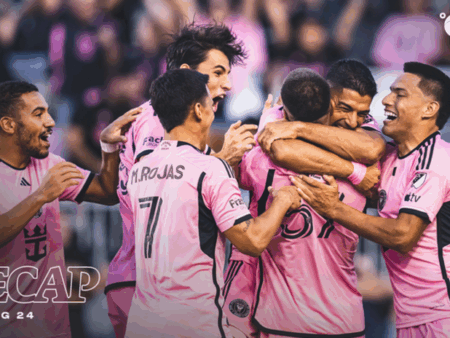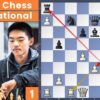The annual ritual of the fantasy hockey draft is often a flurry of excitement, focused predominantly on the marquee names, the undisputed titans who reliably fill the stat sheets. Coaches, managers, and armchair general managers alike meticulously prepare for the early rounds, securing their Draisaitls, Matthews, and Shesterkins. This is, undeniably, a foundational step. Yet, a peculiar truth persists in the realm of virtual ice: championships are rarely forged solely on the backs of first-rounders. The true architects of league victories often ply their trade in the shadows of the draft, unearthing value where others see only footnotes.
The Philosophy of the Late Round – Winning in the Margins
Imagine a grand chess match. The opening moves dictate the overall structure, but it`s the subtle, often overlooked maneuvers in the mid-to-late game that truly define the victor. Fantasy hockey operates on a similar principle. While everyone procures their share of elite talent early on, the difference between a mid-table finish and hoisting the digital trophy lies squarely in the judicious application of those final, seemingly inconsequential picks. These are not mere bench warmers; they are calculated wagers, players whose current average draft position (ADP) belies a simmering potential for significant impact. This isn`t about hoping for a miracle; it`s about identifying the confluence of circumstance and opportunity.
Decoding Potential – What to Look For
The late rounds demand a shift from raw talent evaluation to a more nuanced analysis of contextual factors. It`s less about historical performance and more about projecting future roles. Here are the archetypes of overlooked talent that often deliver disproportionate returns:
The Ascending Apprentice
These are often younger players, perhaps highly drafted in real life, who are on the cusp of a breakout. They might have spent a season or two acclimatizing to the NHL pace, but a significant veteran presence is either fading or has departed, clearing a direct path to top-six minutes or a primary power-play role. Their ADP might still reflect their “prospect” status, but their immediate future suggests an elevated platform for production. This season, such players aren`t just filling roster spots; they`re stepping into vacuums of opportunity.
The Revitalized Veteran
Sometimes, a change of scenery or a team`s strategic shift can breathe new life into an established player whose fantasy stock has plummeted. These individuals might not recapture their prime form, but landing on a team committed to a more offensive scheme, or one that desperately needs veteran leadership and scoring, can provide a significant bump in ice time and offensive responsibilities. They often come cheap because their past few seasons have been underwhelming, making them high-reward, low-risk propositions.
The Multi-Category Maestro
Not every valuable player lights up the scoreboard with goals and assists. Defensemen, in particular, can become late-round gold by consistently racking up hits, blocks, and shots on goal. While their point totals might be modest, their contributions across several categories can quietly elevate your team`s weekly performance, often outperforming higher-drafted, “scoring-only” blueliners who frequently appear on injury reports. It`s the hockey equivalent of an efficient, well-oiled machine versus a flashy but temperamental sports car.
The Uncontested Custodian
Goaltenders are notoriously volatile, but late-round value can be found in those netminders who, despite not playing for a perennial contender, are guaranteed a heavy workload. Volume is a cornerstone of fantasy goalie success. If a team is showing signs of improvement, even slight, and a goaltender has no significant competition for starts, they become a high-volume play with the potential for wins and save totals that belie their draft cost. Extracting league-average goaltending from a 200+ ADP pick is, frankly, a steal.
Strategic Considerations – The Fine Print of Opportunity
Beyond identifying player archetypes, the true craft lies in recognizing the underlying catalysts for their potential surge.
- Depth Chart Dynamics: Scrutinize team rosters. Who is blocking whom? Is an aging star nearing retirement? Has a key player been traded or left via free agency? These movements create vacancies, and the player “next in line” on the depth chart is your prime target. This isn`t about predicting injuries (though a deep bench for injury insurance is always prudent); it`s about anticipating natural career progressions and team realignments.
- Power Play Power: A consistent role on even a second power-play unit can significantly inflate a player`s offensive output. A defenseman quarterbacking the top power play for a mediocre team is often more valuable than a highly talented blueliner stuck on the second unit of an elite squad. Opportunity on the man-advantage is a potent multiplier.
- Team Trajectory: Some teams just have “good vibes” – a new coach, a promising rookie class, or a few shrewd off-season acquisitions can signal an upward trajectory. Players on these improving teams, particularly those in elevated roles, are often undervalued. Their success is tethered to the rising tide of their organization.
Conclusion: The Art of the Calculated Gamble
Late-round picks are not lottery tickets to be forgotten in the back of your digital wallet. They are calculated bets, informed by a meticulous understanding of player roles, team dynamics, and the often-overlooked opportunities that arise in a 32-team league. While the early rounds secure your foundation, it is the strategic savvy applied to those final selections that distinguishes a contender from a mere participant. By focusing on players with clear pathways to meaningful minutes, power-play time, or multi-category contributions, you transform the “margins” of your draft into the competitive edge that ultimately delivers championship glory. This is where fantasy hockey truly becomes an art form: the triumph of analysis over automation, and the quiet satisfaction of seeing your dark horse outperform the flashy, more obvious choices.








